
Students read a passage and answer questions based on the passage. An answer key is included.
- Subject:
- English Language Arts
- Material Type:
- Activity/Lab
- Provider:
- K12 Reader
- Author:
- K12 Reader
- Date Added:
- 02/26/2019

Students read a passage and answer questions based on the passage. An answer key is included.
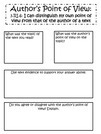
This graphic organizer can be used with any informational text to determine the author’s point of view. Students will use this graphic organizer to determine the topic of a text, the author’s point of view of a text, provide supporting details, and state their own opinion of a text. This could be used with a tech tool where students can draw or type directly on the document (Nearpod, Peardeck, Seesaw, Etc.)

This graphic organizer can be used with any informational text to determine the author’s point of view. Students will use this graphic organizer to determine the topic of a text, the author’s point of view of a text, provide supporting details, and state their own opinion of a text. This could be used with a tech tool where students can draw or type directly on the document (Nearpod, Peardeck, Seesaw, Etc.)This is a link to the same graphic organizer but in Google Slides. The teacher could assign it in Google Classroom for the students to respond to. Google Slides Organizer

In this lesson, students will learn how to create and defend their own opinion about the topic they have been reading about while using the facts they collected. This lesson is on pages 47-48 and is part of the 'Determining Importance' unit.
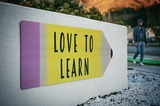
As a way to support teachers with English Language Arts (ELA) instruction during the pandemic, the NCDPI ELA team created choice boards featuring standards-aligned ELA activities.The intended purpose of these choice boards is to provide a way for students to continue standards-based learning while schools are closed. Each activity can be adapted and modified to be completed with or without the use of digital tools. Many activities can also be repeated with different texts. These standards-based activities are meant to be a low-stress approach to reinforcing and enriching the skills learned during the 2019-2020 school year. The choice boards are to be used flexibly by teachers, parents, and students in order to meet the unique needs of each learner.Exploration activities are provided for a more self-directed or guided approach to independent learning for students. These activities and sites should be used as a way to explore concepts, topics, skills, and social and emotional competencies that interest the learner.

Students read a passage about different types of patterns and answer questions based on the passage. An answer key is included.

This lesson is possibly three to five class periods. Student groups will select an endangered Asian animal from the teacher approved website and animal list. During this lesson students will begin researching and collecting information about the animal. This lesson was developed by Ashley Wondra as part of their completion of the North Carolina Global Educator Digital Badge program. This lesson plan has been vetted at the local and state level for standards alignment, Global Education focus, and content accuracy.

Students will learn to find main idea in a nonfiction text about endangered rhinoceroses. Main idea should be taught prior to this lesson using reading strategies. Students should already know main idea is what the text is mainly about in one sentence. Students should be able to locate the main idea in the topic sentence, heading, last sentence of the text, and know it may be found in text features. This lesson was developed by Ashley Wondra as part of their completion of the North Carolina Global Educator Digital Badge program. This lesson plan has been vetted at the local and state level for standards alignment, Global Education focus, and content accuracy.
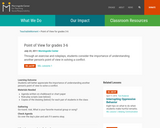
Students consider the importance of understanding another person's point of view in solving a conflict.

Using Wonders text and their Reading/Writing Companion, students will learn why people immigrate to new places. Students will learn the difference in primary and secondary resources and why it is important to know where to get information. After reading texts from Wonders, students will use Google Earth to explore the places mentioned in the text and complete a Padlet discussing what they notice and wonder about the different locations. Students will be given an interactive note taking sheet on Jamboard to utilize as they read “The Castle on Hester Street”. Students will once again use Google Earth to explore Ellis Island as they begin to read “Next Stop, America!” and will complete a PearDeck text feature hunt. This will lead to a formative assessment where students will use FlipGrid to create a journal entry portraying themselves as an immigrant coming to America in the 1800’s.

This graphic organizer can be used with any informational text to determine the author’s point of view. Students will use this graphic organizer to determine the topic of a text, the author’s point of view of a text, provide supporting details, and state their own opinion of a text. This could be used with a tech tool where students can draw or type directly on the document (Nearpod, Peardeck, Seesaw, Etc.)This is a link to the same graphic organizer but in Google Slides. The teacher could assign it in Google Classroom for the students to respond to. Google Slides Organizer

This course was created by the Rethink Education Content Development Team. This course is aligned to the NC Standards for 3rd Grade ELA.

This resource accompanies our Rethink 3rd Grade ELA course. It includes ideas for use, ways to support exceptional children, ways to extend learning, digital resources and tools, tips for supporting English Language Learners and students with visual and hearing impairments. There are also ideas for offline learning.

This course was created by the Rethink Education Content Development Team. This course is aligned to the NC Standards for 3rd Grade English Language Arts.

Students read a passage and answer questions about summarizing skills. An answer key is included.
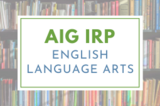
This activity for gifted learners might serve as a culminating activity of part of a larger social studies unit or an English language arts unit centered on the concept of culture. Students will take part in close readings of a variety of fiction (folktales, myths, historical fiction, etc.) and non-fiction (informational books, reference books/materials, maps, magazines articles, original documents, websites, etc.) throughout the unit. As they read, they will pay attention to the different sections of the books (e.g., - nationalities, religions, languages, etc.) and take notes on what applies to them/where they fit in regard to that topic/category, thus comparing & contrasting where they stand when considering their place in America & their place in the world. They will then work to create a “self portrait” by crafting their research into a portrait that conveys who they are in America, in the world, and in their own head & heart and present that information to the class. This lesson was developed by NCDPI as part of the Academically and/or Intellectually Gifted Instructional Resources Project. This lesson plan has been vetted at the state level for standards alignment, AIG focus, and content accuracy.

This activity is in place of Research and Inquiry project on page 111 and 121 of student reading / writing companion In this lesson, students can choose from a list of historical figures to create a research project. Students will be asked to create a digital timeline of that person, and include images, audio, and/or video on their timeline that they find throughout their research. Each student will be asked to present their timeline to the rest of the class.

Students will learn the reasons an author writes a selection. They will use various books and articles to determine the purpose of each text. This resource contains a Powerpoint and a graphic organizer.
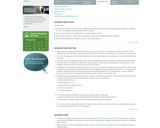
In this lesson, students will use thematically related texts, organized from least to most complex, to gather a word bank of supporting details and content vocabulary about a concept. Then they use these words as a basis for writing acrostic poems, which support organization of information around a central idea, as the lines of an acrostic poem are held together by the topic or main idea spelled vertically.